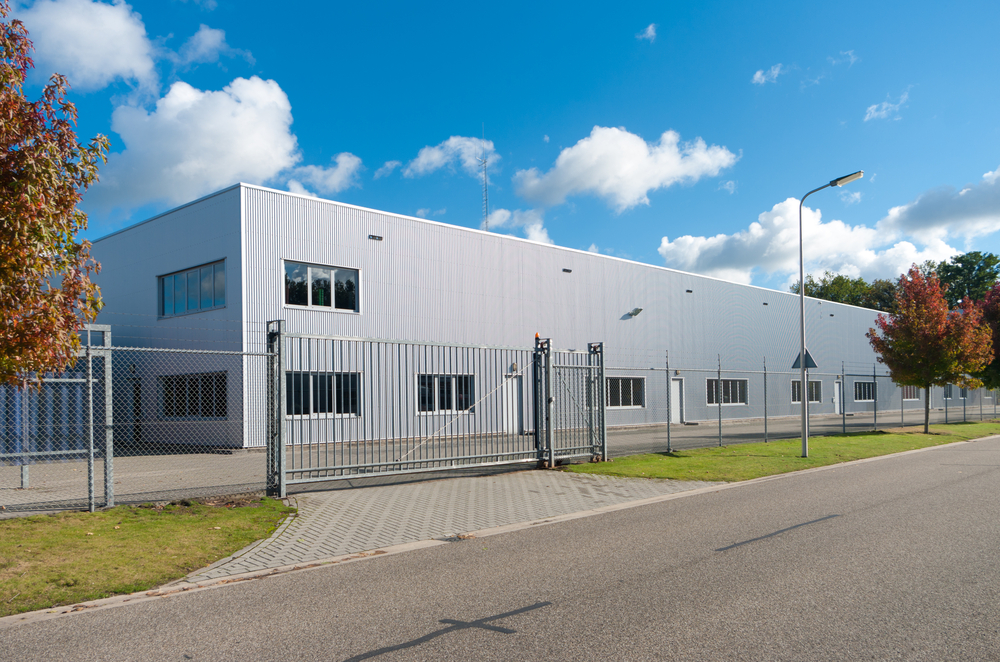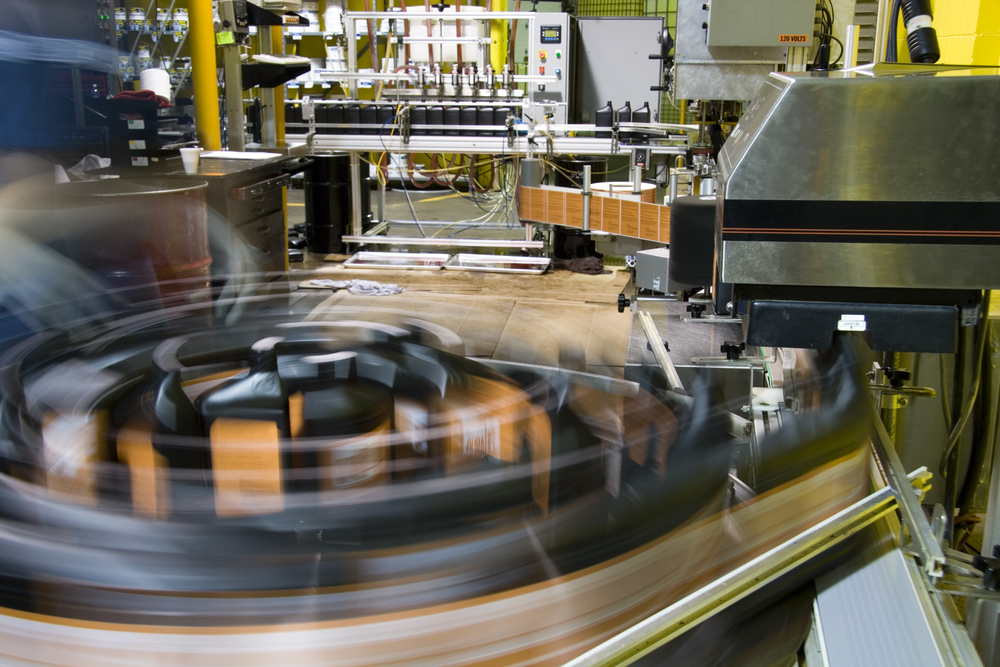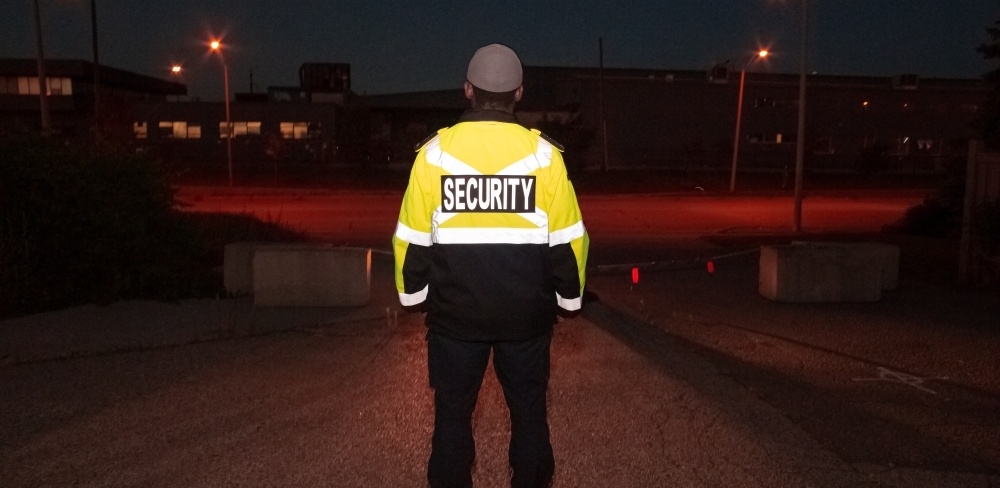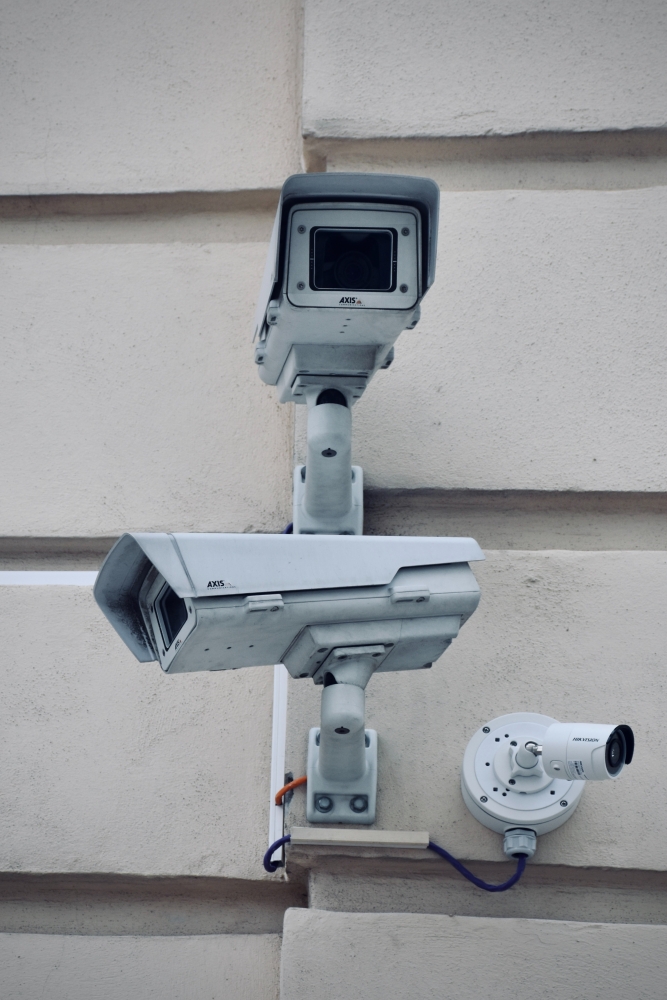Manufacturing Security Solutions
Industrial and manufacturing facilities may not be subject to the same types of crimes that occur in apartment complexes or even retail outlets and shopping malls, but the prevention of theft and even sabotage, as well as the safety of employees, requires reliable security.
The most fundamental security system is far superior to having no security apparatus at all, but industrial facility security issues often mean that something beyond locked doors and windows is needed.
Basic industrial facility security should include barbed wire perimeter fences with padlocks on all gates along with an intrusion detection alarm system.
In addition, commercial grade video surveillance cameras to monitor and record activity should be deemed essential along with electronic access systems installed on every exterior door. These systems should be able to track and record entries and exits, and distinguish between employees and non-employees.
Industrial or manufacturing facilities that contain expensive materials, tools, and inventory, or that potentially dangerous items may feel the need to install excessive vibration sensors on fences and building entrance points.
Ultimately, an industrial or manufacturing facility can take their industrial security to an even more advanced level with sophisticated systems that include electronic visitor management, biometric access control, and intelligent video systems that incorporate Internet protocol communication.
The essential purpose of physical security measures at industrial facilities and manufacturing plants is to minimize vulnerabilities and prevent intrusion.
Common external threats to industrial plants are theft, vandalism, sabotage, and trespassing. Because many plants are easily accessible and have multiple entrances, investing in manufacturing security solutions such as cameras and access control are the most popular and common tactics employed for securing facilities.
The Problem with Industrial Facility Security
Aside from the sheer size of many industrial facilities and the complex and often bewildering structures that must be monitored and secured, there is the growing complexity of security threats, as well.
An article at the International Society of Automation (ISA) website noted that,
“It is no secret that many kinds of industrial facilities have been identified as potential targets for malicious attacks, including oil and gas production sites, refineries, gas distribution sites, chemical plants, pulp and paper mills, and power-generation stations. As such, there is a need for a comprehensive security strategy for these facilities and other critical infrastructure.
In the industrial sector, recent threats to critical infrastructure have prompted a tightening of security measures. Government regulations such as the Chemical Facility Anti-Terrorism Standards and the Maritime Transportation Safety Act also require companies to implement effective measures to defend against industrial security threats. There may also be a further need for mandates, such as the transport worker identification credentials.”
Their article goes on to note that physical security measures represent important considerations in an asset protection scheme that includes cybersecurity and information security.
The problems with implementing and maintaining proper and effective security for industrial facilities are largely three-fold.
According to Adrian H. Fielding, industrial security solutions expert and a General Manager at Honeywell Process Solutions,
“The U.S. Department of Justice has determined that an effective plant security system serves three vital functions: detection (discovering or sensing adversary action), delay (impediment to adversary progress), and response by security personnel to ensure a threat is neutralized.”
Unfortunately, most “traditional” security measures that are installed to achieve these three functions often come up short in the face of increasingly sophisticated and determined threats.
As Mr. Fielding points out,
“Examples of traditional protective tactics include increasing security patrols, strengthening fences, installing better locks on doors, relocating sensitive processes within the facility, installing intruder detection systems and alarms, and performing background checks on employees.”
But the sobering reality is that security patrols cannot be everywhere all the time, fences and locks can be bypassed, detection systems and alarms can deter but not prevent security breaches, and background checks help minimize potential “inside jobs” but do nothing against outside threats.
And what about the tens of thousands of smaller, less complex industrial and manufacturing facilities?
Throughout the United States, the vast majority of commercial buildings are relatively small. About half of buildings are 5,000 square feet in size or smaller, and nearly three-fourths are 10,000 square feet or smaller, according to data from the U.S. Energy Information Administration (EIA) 2018 Commercial Building Energy Consumption Survey.
The smallest buildings, those 1,001 to 5,000 square feet in size, accounted for almost half of all commercial buildings, but they occupied only eight percent of total commercial floorspace. Nearly three-fourths, or 71 percent, of buildings were 10,000 square feet or smaller.
All of which points to the fact that the vast majority of industrial facility security challenges and needs arise from structures and facilities that are roughly the size of five average homes in the United States.
The Challenge of Industrial Facility Security

To a certain extent, a comprehensive security system can help mitigate instances of workplace violence, especially violent acts that may be committed by non-employees attempting to enter secure workspaces.
Depending on the extent and coverage provided by a given security system, employee theft and other internal crimes can be deterred and minimized, as well.
However, most security processes and systems are geared to protect against the most common threat facing most industrial facilities: that of property theft.
According to information from Pew Research,
“Property crime in the U.S. is much more common than violent crime. In 2019, the FBI reported a total of 2,109.9 property crimes per 100,000 people, compared with 379.4 violent crimes per 100,000 people.”
A CNET article stated that, according to the FBI, businesses are less likely to be burgled compared to residences.

“In 2019, 5% percent of burglaries occurred in commercial or office buildings, 4% occurred in rental storage facilities, 2% occurred in specialty stores, 2% occurred in restaurants and 2% occurred at construction sites.”
While that statistic may seem comforting to an owner or facility manager of an industrial property, keep in mind that in 2019 there were over 5,000,000 cases of theft/larceny reported. And it is estimated that upwards of half of all property crimes go unreported.
But even with this reported number, five percent still means that commercial buildings – including many industrial facilities – were the target of at least 250,000 thefts and burglaries in just one year alone.
The challenge for business owners, facility managers, and other parties responsible for the integrity and security of industrial facilities, as well as for the safety and well-being of employees, is choosing the best security methods.
Considering Uniformed Security Guards and Building Security

The presence of uniformed security personnel is an essential component of an enhanced security system in a facility when combined with video surveillance.
Also referred to as manned guarding, these security personnel can patrol by vehicle or on foot, armed or unarmed, and be stationary or mobile. On-site manned guarding utilizes either third-party security officers that work according to the clients security protocols and specific needs, or are employees of the company.
The problem with security personnel is that they are inherently limited by dint of being human, which means they need breaks, can’t be in more than one place at one time, and are capable of making mistakes or simply being less than effective.
And although there are many reputable and reliable third-party security firms, the security industry has a reputation for allegedly hiring less-than-competent employees or providing poor to sub-par training. While these characterizations may be unfair and largely undeserved, even those security companies with stellar organizations must deal with employee issues.
Another challenge when using security guards is that even the most professionally trained personnel have limitations that can prevent them from providing fully comprehensive security for a property.
For example,
- The larger the facility, the more security personnel that are required.
- Guards can be subdued or even hurt by individuals when intervening in incidents.
- Unarmed security personnel are stopped by armed trespassers.
- Their ability to arrest and detain individuals can be limited.
Even the simple act of trying to detain a trespasser is complicated with legal issues depending on the type of guard, the state it occurs in, and more.
The security guard may arrest a person when that person has committed a felony, but only if a felony has actually been committed. If the offense is not a felony it must be committed or at least attempted in the presence of the security guard before a citizen’s arrest can be made.
While manned guarding and even employee security personnel are probably mandatory in larger facilities, or those in high-risk industries, the breadth of security they can provide has limits.
Beyond Burglar Alarms and Roving Security Patrols
Smaller industrial and manufacturing facilities are somewhat notorious for having security measures in place that fall far short of sufficient.
Typically there will be the obligatory alarm system attached to doors and windows. There may or may not be some type of secure fencing around the perimeter of the property. And there may – or may not – be a roving security patrol vehicle that makes regular rounds through the night.
Larger facilities, on the other hand, do tend to boast much more in the way of traditional security measures.
This can include secure fencing with gate access controls, possibly barbed wire or razor wire topping the fences in some scenarios, more sophisticated alarm systems incorporating such features as motion sensors and excessive vibration sensors.
Of course, these facilities will without exception have comprehensive coverage of their facility grounds and building with a video surveillance system. These cameras may also be equipped with motion sensors, as well as infrared for better night vision monitoring.
Security isn’t just about keeping the “bad guys” out and the tools and inventory in. Workplace violence, employee safety, and internal theft or even sabotage are security concerns.

Certain industries have their own set of requirements, federal oversight, and mandated security protocols such as the chemical industry. Most of these facilities are guided by the Chemical Facility Anti-Terrorism Standards (CFATS), which requires “high–risk” chemical facilities to enhance security and establish new procedures for protecting chemical facility security information.
While not every industrial facility serves as a potential target for terrorism, many of them have materials and equipment on-site that may make their building much more prone to theft. This is why, in larger companies with larger budgets, advanced security measures such as armed security personnel on site 24/7 and various high-tech installations.

There are some inherent limitations with them, one of the most effective tactics is the use of video surveillance cameras.
Cameras allow facility managers and on-site security personnel a visible deterrent. It has been long established that the visible presence of cameras serves to dissuade a majority of potential criminals. At the very least they limit the threats since most “bad guys” will naturally avoid being “seen” by cameras when engaging in illegal activity.
However, video surveillance and security camera systems still have limitations. Although they are far more effective at surveilling than human security personnel on the ground, they are inherently passive tools.
In other words, a video camera by itself cannot intervene with nor can it actively engage with a criminal threat taking place at a building. And, while the mere presence of the camera might be a deterrent to some criminal elements, they can also be avoided or even vandalized or destroyed. And possibly the most frustrating to owners and managers, they can be simply ignored because the “bad guys” know that they can simply carry out their crime and leave with nothing to fear.
And the facility owner and managers are left with some video footage of the crime that might allow law enforcement to possibly identify and pursue those individuals, but not likely.
A Superior Security Solution for Industrial and Manufacturing Facilities
One of the overriding problems with most industrial video surveillance systems incorporating cameras is the lack of monitoring. In other words, static cameras are installed that run on some type of recording system, but they simply record.
No one is actively monitoring the “live feed” during the nights and weekends.
Unless an industrial or manufacturing facility is being monitored comprehensively and consistently 24/7 the whole of the existing security process is only as effective as any vulnerabilities or gaps in monitoring.
This is because, despite the existence of video surveillance cameras, the deterrence they provide is still passive and mute. And if there is no manned guarding service onsite during the night hours or weekends – whenever the facility is not open or operating – the threat level rises exponentially.
Due to the changing nature of security technology and the sophistication of criminal activity, constant diligence is required to intervene with new or repeated attempts to breach the security of a facility.
As we noted earlier, an effective industrial facility security system process serves three vital functions:
- Detection (discovering or sensing adversary action)
- Delay (impediment to adversary progress)
- Response (by security personnel to ensure a threat is neutralized)
A facility that chooses to only have security personnel on-site during the day and a roving patrol at night – without cameras – is simply asking for a burglary to be committed.
And a facility that foregoes uniformed security personnel, or manned guarding, in favor of an extensive industrial surveillance system has no means of engaging with or preventing any acts by would-be vandals, thieves, or other criminal elements.
In most traditional security scenarios, a combination of these two elements – comprehensive video coverage and a readily available security personnel response – would seem to be the ideal solution.
Of course, for larger companies operating in larger facilities, the resources for this type of extensive security process are much more feasible. However, for smaller facilities or businesses that lack the operating budget for such a comprehensive security setup, this can be a challenge.
Perhaps one of the most advantageous developments for these smaller facilities has been the rapid development and evolution of security video surveillance camera technology.
Providing an Ultimate Industrial Facility Security Solution in a Real World
With the advent of advanced technology being made available in smaller, yet affordable video camera systems, most every industrial and manufacturing facility is likely to have some level of video surveillance in place.
And, in addition to surveillance, the benefits of using high-quality video camera systems go far beyond security.
For those businesses that have the resources to afford a full-time security staff, it is also possible to have personnel onsite who can monitor live video feeds throughout the night and during any other time the facility is not being manned.
While they may not always be able to actively intervene to “delay and respond” to a threat, the use of high-tech digital video surveillance recording systems means that security and managers can quickly and easily obtain and access a record of events. These digital video assets of actions that have taken place on or in a facility can be critical for law enforcement needs, as well as for liability reasons.
If a crime such as vandalism, theft, arson, or burglary has been committed and successfully recorded, the digital video footage may be useful to law enforcement for the identification and possible apprehension of perpetrators.
As has been noted here previously, numerous studies and surveys of actual criminals have determined that having visible cameras installed throughout an industrial or manufacturing facility can act as an effective, albeit passive, deterrent to potential criminal activity.
Thieves, burglars, vandal, trespassers, and other criminal types have been shown to avoid detection by security cameras in almost every case.
However, in the absence of any alternative security approach, the traditional “ideal” solution is to make use of manned guarding in conjunction with recorded video surveillance. In other words, a facility’s security strategy solution must include live security personnel in some capacity.
Those options range from having on-site, uniformed guards monitoring key locations throughout the night, to a scheduled roving security patrol provided by a mobile security service during the nighttime hours.
Smart Technology:
The Ultimate Solution for Reliable Manufacturing Plant Security
AI Blackbox Technology
Active Intercept
Proactive Prevention
An ideal security solution would employ a superior video security system that has the ability to interact with and engage individuals attempting to trespass, steal property, or commit some other criminal act in real-time.
In other words, a video surveillance system that can “detect, delay, and respond.”
This would require a system that possesses the ability to intelligently analyze and assess each threat occurrence. In addition, it would incorporate both live monitoring from a remote site, along with artificial intelligence (AI) technology that would enhance the capabilities of existing video cameras.
A system with these features could be referred to as a “smart” video surveillance system.
Fortunately, this ultimate “smart” video surveillance system is already available from Blue Eye.
Armed with the SmartHub, your existing camera network can be easily transformed into an interactive security system. Your industrial or manufacturing facility’s existing cameras become sensors and our AI software enables the cameras to actively monitor your property for security threats and other prohibited activity.
Our AI process also provides your security system with analytics processing which can trigger a response to a security threat.
When a criminal threat or security breach is detected at your facility, for example, an alarm is immediately sent to our command center. It is there that our highly trained Video Surveillance Technicians (VSTs) respond to these threats in real-time by assessing the situation and taking appropriate action.
This alarm, response, and action – “detect, delay, and respond” – sequence can result in responses such as simply giving a verbal warning that is broadcast over the on-board loudspeaker system, to calling the police or your contracted security service provider.
What we know, however, is that because the direct audio system actually stops incidents from escalating almost 99 percent of the time, we rarely need to dispatch the police.
And, best of all, the entire system solution is far more affordable than maintaining a manned guarding presence on-site.
Why Blue Eye:
The Best Smart Security Solution for Industrial Facilities
With Blue Eye working as your security partner, our approach of using both artificial and human intelligence will provide your facility with a safe and highly reliable solution utilizing the cameras you already have installed.
It is the enhancement of our AI software technology that turns your security cameras into detection and breach sensors, allowing your system to analyze and even anticipate threats. The resulting real-time, interactive surveillance system uses advanced security and surveillance technology to transform your video camera network into a smart security system.
Blue Eye’s advanced, proprietary, managed service platform provides you with state-of-the-art technology and performance that will provide your facility with a highly enhanced security network.
With AI-enhanced video surveillance from Blue Eye, our remote personnel can safely maintain video monitoring in a secure environment, while having the ability to dispatch security or police to your facility, if needed.
By using both artificial and human intelligence, this approach allows for effective security solutions, all while utilizing the cameras you already have installed at your property.
If you would like to learn more about our unique approach to provide security for your site, call us at 855.258.3662 or email us at [email protected] and let us design an effective solution for your business!
Partner With Us
Fill out the form below for a free quote.


See What Our Clients Say About Us





“Install was smooth and easy with the team from Blue Eye working with my IT staff. We had no issues with install at all. During the life of the contract when cameras get dirty or have issues the Blue Eye team will let you know and other than that there have been no issues or concerns. It truly is install the service and no more staying awake at night worrying about the stores.”
Marty Smith | Director of Compliance & Facilities | The Evergreen Market



